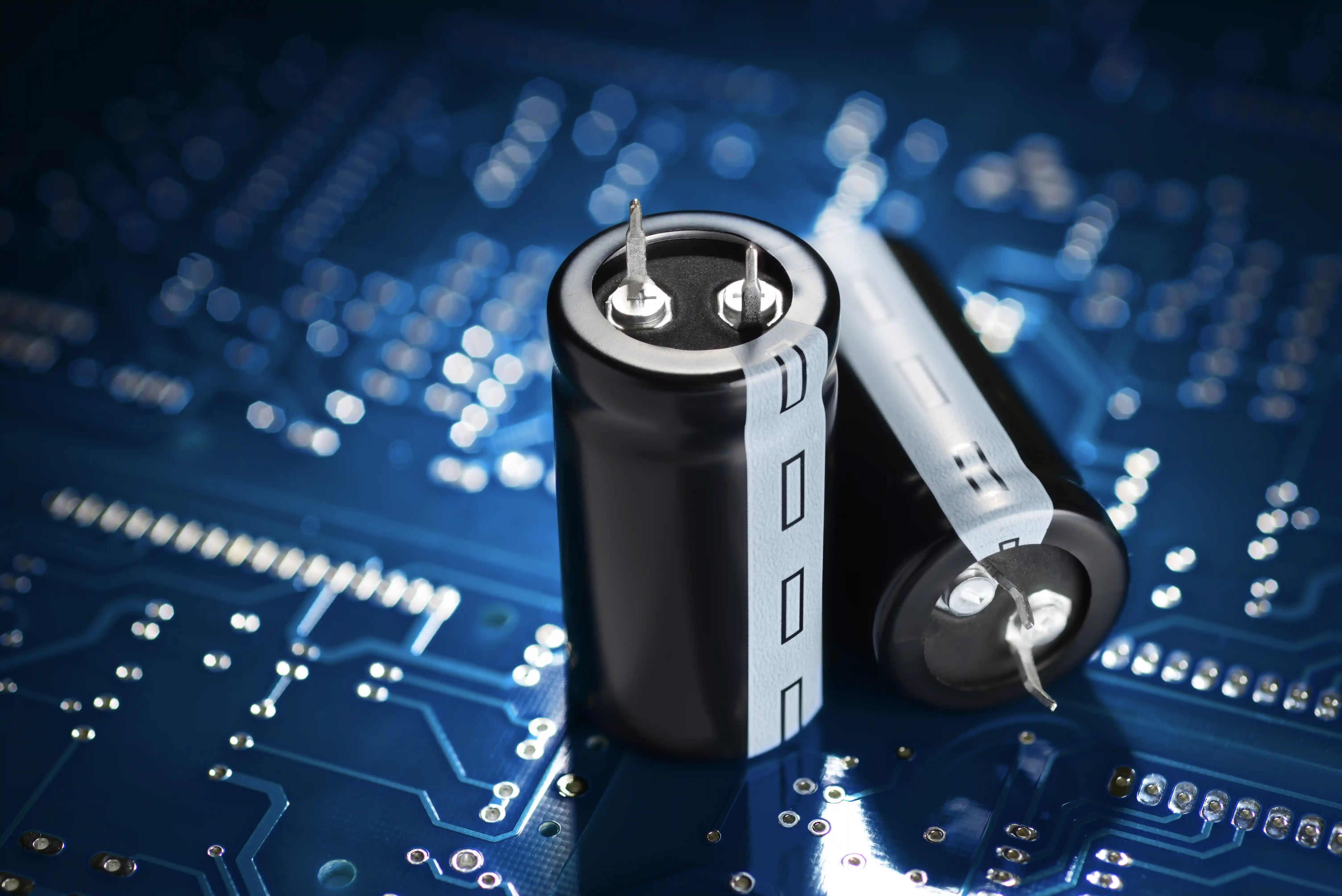Kodeclik Blog
How does a capacitor work?
A capacitor is an electronic component that stores and releases electrical energy. Capacitors, along with resistors and inductors, form the fundamental trinity of passive electronic components in circuits. Resistors limit the flow of current, inductors store energy in magnetic fields, and capacitors store energy in electric fields.
While resistors and inductors have well-defined and widely understood roles, capacitors provide a unique ability to store and release electrical charge. They are crucial in a variety of applications, from smoothing power supplies and filtering signals to timing circuits and energy storage.

Are capacitors used in computers?
Yes! In computers, capacitors play a critical role in various aspects of electronic circuitry. You will find them in many places. Capacitors are used to stabilize the power supply to your computer, to ensure a constant and smooth flow of electricity, thereby preventing data loss and system crashes. Capacitors also are used in filtering out noise from signals and regulating voltage levels, contributing to the reliable operation of computer components. Moreover, capacitors are found in computer memory modules, such as DRAM, where they temporarily store data in the form of electrical charge, allowing for rapid access and retrieval of data.
Understanding how a capacitor works
A capacitor is like a tiny, temporary battery in an electronic circuit. Formally, it consists of two conductive plates separated by an insulating material, capable of storing an electric charge and then discharging it when needed in electronic circuits. One way to think of a capacitor is that it consists of two metal plates separated by a material that doesn't conduct electricity, kind of like a sandwich with insulating bread and metal fillings. When you connect a capacitor to a power source, one plate gets filled with electrons while the other plate loses them, creating an electrical imbalance. This setup stores energy in the form of an electric field between the plates. Later, when you disconnect the power source, the capacitor can release that stored energy back into the circuit. It's like a quick burst of electricity that can be used for various tasks, such as helping to maintain a steady power supply, filtering out noise, or even storing and releasing data in electronic devices.
Are there only three basic circuit elements?
This used to be the case. In recent years, another element, the memristor, has gained attention. The memristor was originally hypothesized to exist by Prof. Leon Chua. A memristor is a device with a memory of its past resistance states. It exhibits a unique property: its resistance changes based on the amount and direction of charge that has previously flowed through it. This memristive behavior allows it to store and process information, similar to how capacitors store and release electrical charge. As such, memristors have the potential to revolutionize memory and computing technologies, offering a novel way to store and manipulate data that complements the roles of capacitors, resistors, and inductors in electronic circuits.
Are there capacitors in my home?
Most definitely, yes! Everywhere you look (well you have to open them up) you will see capacitors. Capacitors are used in televisions to stabilize power supplies and help with signal processing. As mentioned earlier, capacitors are there in your computers/laptops for power regulation and filtering. Your home’s A/C unit will use capacitors to start and run the compressor motors. Speaking of motors, your home’s refrigerator will also have capacitors as will your washing machine and dryer. Ceiling fans will have capacitors, and so on. There is no getting by without capacitors! These examples highlight the versatile role of capacitors in various household devices, ensuring they function efficiently and reliably.
How do you measure capacitance?
Capacitance is the fundamental electrical property of capacitors and how we measure their ability. Capacitance is measured in Farads (F), named after the physicist Michael Faraday. One Farad is defined as the capacitance of a component that stores one Coulomb of charge when a one-Volt voltage difference is applied across it. However, Farads are relatively large units, so microfarads (µF), nanofarads (nF), and picofarads (pF) are commonly used for capacitors in electronic circuits.
Capacitance can be measured using various methods. In a lab, it can be determined by charging a capacitor and measuring the voltage across it, then calculating capacitance using the formula C = Q/V, where C is capacitance, Q is charge, and V is voltage. Specialized instruments like capacitance meters are also used for precise measurements.
The capacitance value indicates how much charge a capacitor can store per unit voltage. A larger capacitance means the capacitor can store more charge, which means it can store more energy. Capacitors with higher capacitance values can store more energy and discharge it over a longer period, making them suitable for applications that require energy storage, like in power supplies or energy-efficient lighting.
Note that capacitance can also vary with frequency. In some applications, such as in high-frequency circuits, capacitors may exhibit different capacitance values due to their response to changing frequencies. This is an important consideration in radio frequency (RF) and microwave circuit design.
How does the inside of a capacitor look?
The material between the plates of a capacitor, known as the dielectric, is really the crucial part of the capacitor. Importantly, it determines the capacitance value. Different dielectric materials have varying abilities to permit the accumulation of charge. Materials like ceramic, tantalum, and aluminum oxide are commonly used in capacitors, with each offering different capacitance values and characteristics.
If you liked learning some basic chemistry (and physics) about capacitors, checkout our blogpost about iron rusting. Also learn about the Ucode ID system.
Checkout Kodeclik's Summer Camps and Classes! Sign up for 1:1 or small group classes.